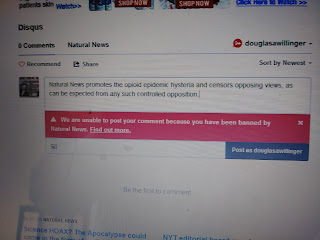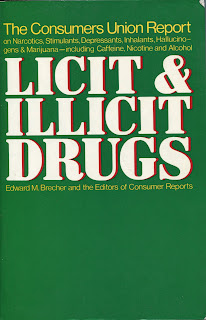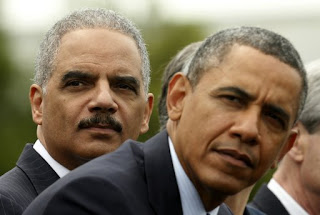23 months to the 100th anniversary of the U.S. Harrison 'Narcotics' Tax [Prohibition] Act effectively banning most Opiates and anything containing any amount of cocaine, signed into 'law' December 17, 1914. The following is an article about the predessessor to the Harrison Act, the U.S. Food and Drugs Act of 1906 so empowering the Bureau of Chemistry of the USDA the iniitial thrust of what became the 'drug war'.
Centennial of Federal Drug Laws - June 30th, 2006
By Dale Gieringer,Ph.DThis month marks the centennial of the first federal drug laws. On June 30th, 1906, Congress approved the Pure Food and Drugs Act, giving the U.S. Bureau of Chemistry - the forerunner of today's FDA - the unprecedented power to ban certain drugs from the market. The act proved to be a fateful step toward a regime of total federal control that would eventually restrict Americans' access to valuable medicine, stifle research, and create a vast new field of criminal enterprise.
At the time the act was passed, there was no such thing as an illegal drug. Americans could readily buy any drug at the pharmacy, including opium, morphine, cocaine, or cannabis, which was then widely recognized as a medicine. Nonetheless, there was little public fuss about drug abuse, and drug crime and violence were unknown in the legal market. However, that began to change when a coalition of drug bureaucrats and professional groups with an interest in regulation joined with the same temperance forces that would soon impose alcohol prohibition to enact tight new federal restrictions on drugs.
The intent of the Pure Food and Drug Act was basically sound: to stop misbranded, adulterated, and fraudulent products. One of its key provisions was to require truth in labeling. Drug manufacturers had to give notice of intoxicating ingredients such as opium, alcohol, cocaine - or cannabis, then a familiar pharmaceutical drug. In addition, however, the food provisions of the act empowered federal bureaucrats to ban certain ingredients deemed to be deleterious.
These powers were promptly abused by the first director of the Bureau of Chemistry, Harvey Washington Wiley, who favored prohibition of both drugs and alcohol. Wiley tried to use the new law to ban saccharine, caffeine, and sodium benzoate, but was fortunately unsuccessful.
However, Wiley did manage to banish mild coca beverages containing small amounts of cocaine on the unsubstantiated claim that they were deleterious to health. In fact, low-potency coca beverages had been on the market for a generation with no evident health problems, and had been endorsed by such luminaries as Thomas Edison and President McKinley. Coca products are still enjoyed today in South America, where they are thought to be helpful for weight control, digestion and diabetes. However, public alarm had been fueled by the introduction of high-potency, pharmaceutical powder cocaine, which caused serious abuse and addiction problems. Ironically, while Wiley succeeded in suppressing harmless coca beverages, the market was soon flooded with high-grade pharmaceutical cocaine, which proceeded to metastasize into a worldwide criminal problem from the jungles of Colombia to the streets of American cities.
The spring of 1906 brought a second important new anti-drug law. On May 7th, Congress passed the District of Columbia Pharmacy and Poisons Act, aimed at cracking down on the sale of so-called narcotics to drug fiends. The DCPPA made it a crime to sell opium, cocaine or chloral hydrate except on a doctor's prescription for illness. This effectively marked the opening shot in the war on drugs , unleashing the police against narcotics. The act was the first of a series of anti-drug measures that would culminate in national narcotics prohibition with the Harrison Act of 1914.
The DCPPA applied only to the District of Columbia, since at that time it was still thought that Congress lacked power to regulate narcotics elsewhere, but it was intended as a model bill for the states, which promptly began to follow suit. Among the first was California, which enacted its own poison law in 1907 at the behest of the state board of pharmacy, an aggressive and nationally recognized pioneer in the war on drugs. Around the state, the board would dispatch undercover agents posing as addicts to wheedle drugs from unsuspecting pharmacists, then bust them and publicize their arrests in the local press. The board swept down on Chinatown, cleaning out the opium dens and burning their wares in public bonfires. It also prevailed on the legislature to pass additional laws criminalizing users and paraphernalia.
The board even procured a pioneering law against cannabis or ³Indian hemp² in 1913, at a time when hardly anyone had even heard of "marijuana." While admitting that cannabis was not a significant problem, the Board warned of an influx of cannabis-using "Hindoos" who might spread the habit. Ironically, only after becoming illegal did marijuana become popular, eventually spreading to millions of users. Cannabis continued to be legally available as a prescription medicine until 1941, when it was forced off the market by two new federal laws. The first was the Marihuana Tax Act of 1937, which imposed prohibitive taxes on cannabis as part of a national prohibition scheme. Faced with prohibitive expenses, manufacturers were compelled to discontinue cannabis pharmaceuticals. Meanwhile, the FDA acquired new powers to keep drugs off the market. The Food, Drug and Cosmetics Act of 1938 required that all new drugs henceforth be approved for safety. The act exempted "old" drugs already on the market in 1938, a category that in principle included cannabis. However, once cannabis had been withdrawn from the market, the FDA reclassified it as a ³new drug.²
Fast forward to 2006, and the FDA insists on treating cannabis like an unproven new drug, conveniently forgetting a long medical history that predates the FDA's own existence. Over time, federal drug regulations were extended to encompass virtually every aspect of pharmaceutical choice. Over-the-counter sales of prescription drugs were outlawed, effectively repealing Americans' right to self-medication. Use of experimental drugs was prohibited except by prior FDA approval, impeding research and denying access to potentially valuable new drugs, sometimes even to terminally ill patients with no other treatment alternatives. Decisions about access to drugs for birth control, abortion, end-of-life treatment and severe chronic pain were taken out of the hands of the patients and put in the hands of politicized bureaucrats at FDA and DEA. Finally, federal narcotics laws were vastly expanded to prohibit virtually every psychoactive substance of interest to humans except alcohol, nicotine and caffeine.
Unlike alcohol, drug prohibition was not the product of any popular initiative. Rather it was the work of insiders, led by pharmacy boards and bureaucrats with an interest in regulation. Public debate was minimal. Little consideration was given to the likelihood that prohibition might have counterproductive effects. Viewed in retrospect, the toll of the drug laws exceeds that of the great 1906 earthquake. In the past century, countless thousands have been killed by prohibition-related drug crime and violence, and countless more by exposure to dangerous black market products. Hundreds of billions of dollars have been spent on drug law enforcement. Millions of Americans have been arrested and criminalized, and nearly half a million Americans are now in prison for drug offenses that simply did not exist a century ago. Despite this, the rate of narcotics addiction today is no lower than in the days when drugs were legal, around 1% of the population.
In retrospect, it is hard to escape the conclusion that 20th century drug control laws have failed. By every criterion, the free market regime of one hundred years ago worked better than today's comprehensive federal prohibition. At the dawn of the 21st century, the time is overdue to address the disastrous legacy of the Hundred Years' War on Drugs.
By Dale Gieringer,Ph.D
Based on an article in the June, 2006 edition of Liberty, "Centennial of an Unnatural Disaster," http://libertyunbound.com/archive/2006_06/gieringer-centennial.html



Comments
Post a Comment